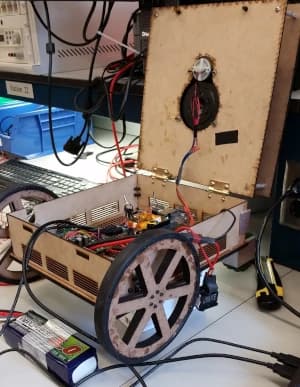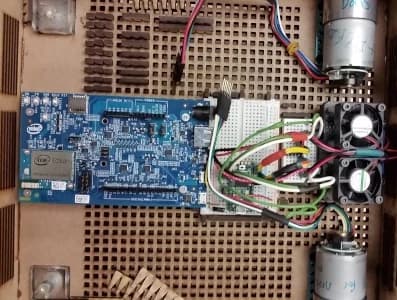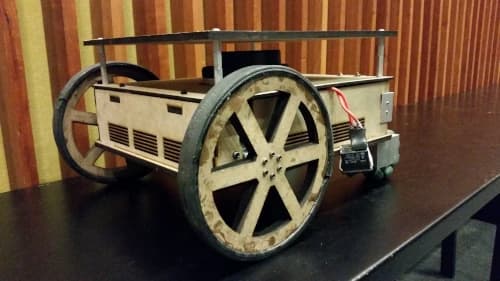
Overview
The Hemoglobetrotter is a prototype transport system to deliver blood to the operating room of hospitals. It was co-created by myself and Ben Kramer as our final project for an electrical class on microcontrollers at The University of Pennsylvania. The goal was to design an autonomous robot that could navigate its way around the hospital while avoiding obstacles. The idea was that it takes time as well as a resource from the doctor in an operation to send a nurse for another blood bag; we thought this system could be automated.

Design
We designed the platform to hold a cooler containing multiple blood bags as well as necessary ice packs for the journey. All in all, the robot was easily able to maneuver with a 35lb cinderblock placed atop it. With these loads it reaches a top speed of 4-5mph or about normal walking pace. The wheel design, two driven wheels in back and two omniwheels in front, allow for point turns. The navigation system uses a LiDAR to detect walls and obstacles and is positioned on a second platform beneath the cooler. The output from the LiDAR is fed into an Intel Edison which determines which action to perform next. These commands are sent to a teensy which deals solely with motor control.


Results
Overall the project was a decent success with a few key exceptions. While we were able to detect walls and center the bot in hallways, the LiDAR we were using, ripped out of a Neato vacuum cleaner, did not provide clean enough data to allow the system drive much any faster than 5mph. We also encountered a severe package drop rate which greatly limited the robots vision. With a better LiDAR we are confident the system could be greatly improved.

